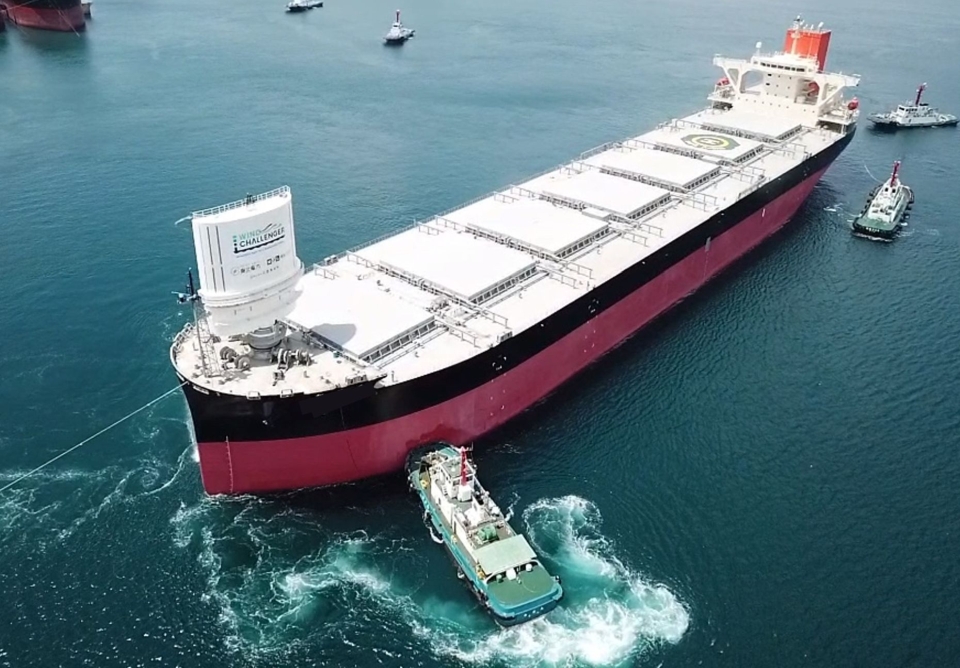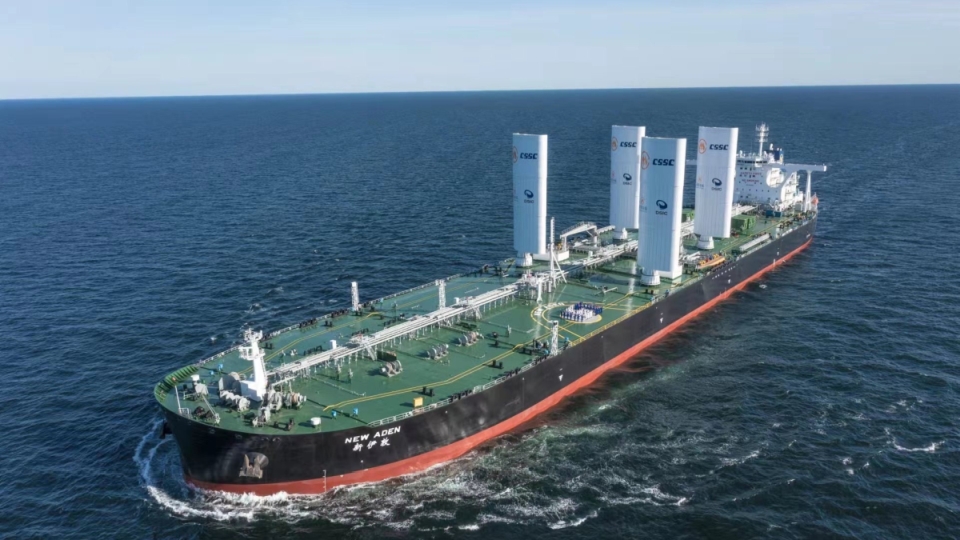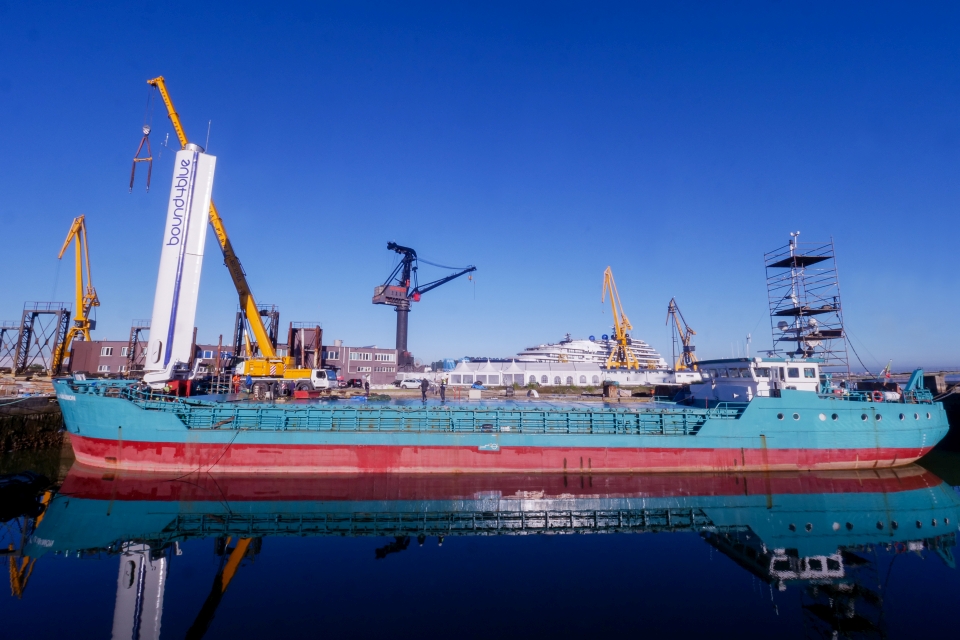We will look back on the last couple of years as being an extraordinary time in the shipping industry, with a pandemic, war in Europe, a global food and energy crisis, logistics disruption, inflation and a swathe of extreme weather events. What of the positives in shipping, I hear you ask? Well, one good news item that still sits below the radar for many in the industry is the swelling momentum in a sector that SWZ has given serious attention to: the use of wind for ship propulsion.

This article was published in SWZ|Maritime’s March 2023 Energy Transition special and was written by Gavin Allwright (pictured on the right), Secretary General of the International Windship Association, secretary@wind-ship.org.
What do I mean by momentum? Last year, we welcomed continued growth in the number of large wind-assisted vessels, with 23 vessels installed with wind capacity and two more being wind-ready. This means that when the year ended, 1.4 million deadweight tonnes of goods could be transported with wind-assisted vessels. This is bolstered by some 20+ small cargo vessels and traditionally rigged cruise vessels and of course numerous small indigenous wind-powered fishing and cargo vessels in areas of the developing world.
Momentum continues to build as we sail through 2023, with a further 24 vessels slated for delivery in 2023 equipped with wind-assist technology and a widening spread of the technologies being deployed, in different segments of the industry and geographically.
Also read: SWZ|Maritime’s March 2023 issue: The energy transition depends on the engineers
More than fifty per cent
We are also going to see primary wind vessels coming into the market in 2024/25. These new-build ships have their wind systems fully integrated and optimised, allowing for well over fifty per cent of the propulsive power to be delivered, especially on selected windy routes.
There are also significant indicators that this is just the start. Large shipowners and charterers have entered the wind propulsion sector or as early movers have increased their commitment. These include MOL, Vale, “K” Line, Cargill, Michelin, Oldendorff, CMES and Marubeni. We are also seeing significant investments going into production facilities both in Europe and Asia and an increasing number of shipbuilding interests either developing their own wind propulsion systems or including systems into their standard equipment lists, lowering the cost of installing certain systems.
These developments indicate a level of early scaling and the first steps being taken towards the achievement of maturity in the market, along with the dissemination of know-how and expertise underway. Tying this to an increasing number of classification society guidelines being released or upgraded, we have a good recipe for further movement in the right direction.

Direction and speed
That’s all great, but many will ask what is driving this? And those who have been following developments more closely, will be asking the opposite: what has been holding developments back?
Both questions are valid. The drivers are pretty clear, with internal and external factors influencing this movement. From an internal perspective, the number of demonstrator vessels is reaching a tipping point, where three points of reference are becoming available for each technology and increasingly available in many of the industry segments, enabling early adopter shipowners to start selecting systems with greater confidence in performance due to having the data to back that up.
Also read: How Conoship designs ships that are ready for future fuels
Large projects
More systems have been entering the market in the last year and the R&D and announced projects pipeline has also been strengthening. However, there has also been a tremendous amount of additional work undertaken in various projects, such as the Wind assisted Ship Propulsion Joint Industry Project (WiSP JIP), the EU Interreg North Sea Europe WASP (Wind Assisted Ship Propulsion) project and others that have been going into validation, certification and operational analysis.
The International Towing Tank Committee (ITTC) and European Sustainable Shipping Forum (ESSF) along with the International Windship Association (IWSA) were also very busy last year, looking to disseminate more information on wind propulsion and looking at standards for key performance indicators (KPIs), sea trials and so on. These activities will continue into 2023/24 and will help to facilitate the uptake of wind systems and their full integration into the regulatory framework.

Driving fuel prices
Externally, high and volatile fuel prices have naturally acted as a wake-up call to many shipowners, with an opportunity to “lock in” a free, zero-emissions energy source for a significant percentage of their requirements being almost a “no brainer” for many companies when they realise that these technologies are on the market right now.
The longer-term planning for low carbon or zero-emissions operations is also driving interest, as alternative fuels will take a significant time to rollout at scale and the cost of these will likely be far higher than existing options and yet there is no pause in the raft of regulation that is aligning over the coming two to three years.
The Energy Efficiency eXisting ship Index (EEXI) and Carbon Intensity Indicator (CII) are both now in force, the decision to include shipping in the EU Emissions Trading System (ETS) has been made and the deliberations on the FuelEU Maritime regulations will likely be concluded in early 2023.
While none of these regulatory levers alone is strong enough to substantially move the needle, combined, they are sending a powerful message that things are getting serious and solutions that are market ready are increasingly being viewed as at a premium.
Also read: CLdN fits RoRo vessel Delphine with rotor sails
Things that slow down
Let’s flip that question; what is holding things back? Why don’t we have 100, 1000 or 10,000 wind technology installations already? There are some clear reasons behind that.
Firstly, the industry is rightfully a cautious one. Safety, certification and third-party performance validation are all crucial, but time consuming. Finance has also been slow to adapt to this technology cluster. As it doesn’t follow the traditional pattern for “fuels”, it has been designated as an “energy efficiency” measure and thus constrained by return on investment (ROI) considerations rather than viewed as a significant energy source that delivers on all environmental, social en governance (ESG) levels. It is not seen as one that is pure zero-emissions and will enable shipowners to have compliant vessels well into the next decade if they install substantial systems, all the while exploiting an abundant, free energy source – very much a win-win-wind situation.
Policy and decarbonisation pathway developers have also been slow to appreciate the huge potential for wind propulsion to deliver their targets far quicker, deeper and cheaper than their traditional “fuel-centric” models have led them to believe. This has held back the sector on a strategic level. However, the calls to adopt a holistic, “energy-centric” approach have been growing and most new policy work is now showing a growing appreciation of wind propulsion, though we still have quite a way to go.
Also read: VIDEO: Oceanbird gears up for testing of Wings
Take-off
In summary, 2023 and 2024 are lining up to be the take-off period for this technology and the question shipowners are now asking themselves is ‘do we move now and lock in the benefits today, including gaining a label of “pioneer?”’, or ‘do we hold fire, make our vessels wind-ready and wait for costs to lower due to economies of scale and a significant learning curve over the next two years?’ This is something of a quandary – should one harness free, zero-emissions wind energy today, or do it tomorrow – not a bad dilemma to have.
Also visit Decade of Wind Propulsion 2021-2030.
Picture (top): The La Naumon (1979), now a theatre ship, has an eSail of Bound4blue (pictures courtesy of International Windship Association).








